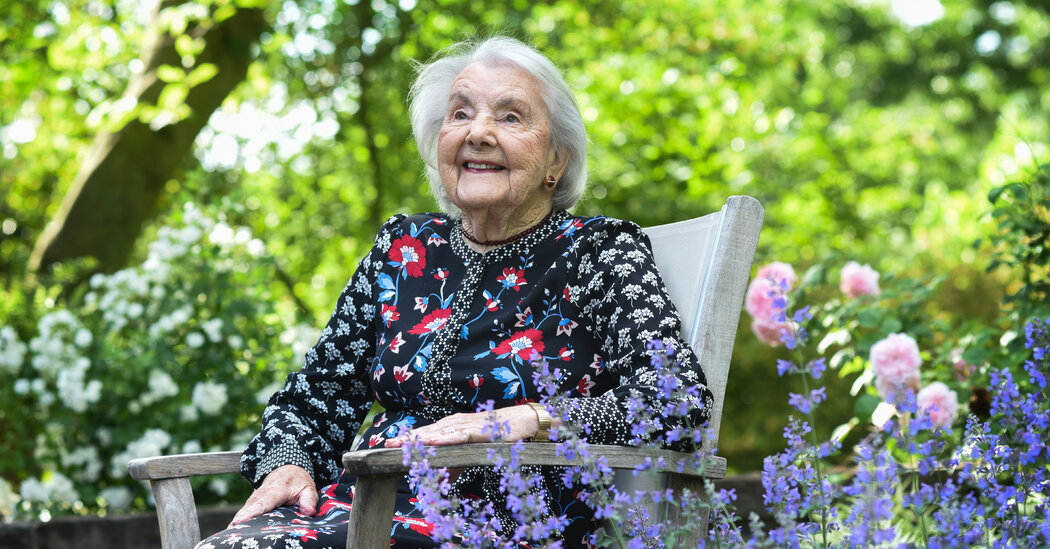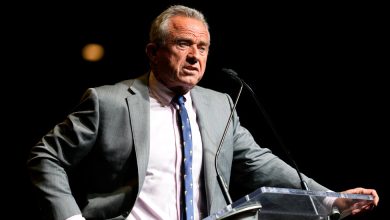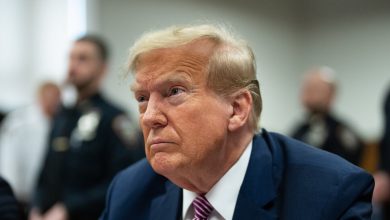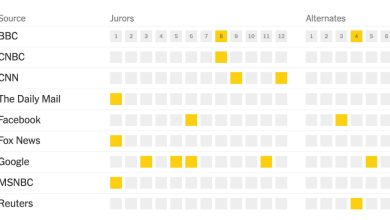
Dr. Audrey Evans, Cancer Specialist Who Gave Families a Home, Dies at 97
Dr. Audrey E. Evans, a pediatric oncologist in Philadelphia who, seeing that her out-of-town patients’ families sometimes struggled to find affordable accommodations when their children needed extended care helped create the first Ronald McDonald House, a concept that has blossomed into a worldwide network, died on Thursday at her home in Philadelphia. She was 97.
Ronald McDonald House Charities announced her death. Susan Campbell, chief executive officer of that organization’s Philadelphia-region operations, called Dr. Evans “a pioneering pediatric oncologist who cared deeply about children and their families.”
Dr. Evans was a renowned figure in the world of childhood cancer. In 1971 she developed what has become known as the Evans Staging System, a protocol for assessing patients with neuroblastoma, a childhood cancer that involves nerve cells. The system helps determine which children need aggressive treatments and which could be aided with less invasive methods.
“More than any other person during the last three decades,” a 2000 article in a cancer journal said of her, “she has transformed our thinking about neuroblastoma.”
To countless families, though, Dr. Evans was just as important for having helped create Ronald McDonald Houses, lodgings near medical centers where families can stay at little cost while their children receive treatment.
She was chief of pediatric oncology at Children’s Hospital of Philadelphia and had been pondering how to help families who brought their children from afar for care when she connected with an unlikely ally, the Philadelphia Eagles of the National Football League — unlikely because Dr. Evans, who was born in England, had no idea what the Eagles or American football were.
Fred Hill, a tight end on the Eagles from 1965 to 1971, began raising money for leukemia when he found out that his daughter Kim had the disease. Teammates and the team’s owner, Leonard Tose, got involved, and after a particularly successful fund-raiser the team went looking for a local cause that would be visible to the people who had donated, rather than just giving the money to a national leukemia organization.
Jim Murray, then Mr. Tose’s right-hand man and later the team’s general manager, recalled that another doctor referred him to Dr. Evans. When he introduced himself, he said in a phone interview, he had to explain that the Eagles were the local pro football team.
That didn’t mean much to her, since she was unfamiliar with the sport, but Mr. Murray got her full attention when he told her he had some money to put toward a charitable cause. She thought of the families of her patients, who would sometimes sleep in their cars or hospital hallways when they brought their children in for treatment. She said she’d love to see a house where these families could stay.
Mr. Murray approached an adman, Don Tuckerman, who handled the account for Philadelphia-area McDonald’s restaurants, which were promoting Shamrock Shakes at the time, and asked if the franchises might donate 25 cents to the cause for each one sold. Instead McDonald’s offered all the proceeds from that promotion, with the proviso that the Philadelphia house be named after the company’s familiar clown character, and then took the program national.
The original Ronald McDonald House opened on Spruce Street in Philadelphia in 1974. Now, the Ronald McDonald House Charities said, there are 380 houses across the United States and in other countries.
Dr. Evans, an Episcopalian, often spoke of feeling called by God to care for children. Mr. Murray also sees a higher hand in their unlikely pairing.
“I couldn’t cut open a frog,” he said. “I couldn’t even pass biology, and here I was talking to all these doctors.”
“She didn’t know what the Eagles were,” he added, “but God put us together.”
Audrey Elizabeth Evans was born on March 6, 1925, in York, England, to Leonard and Phyllis (Miller) Evans. Her father worked in paper products manufacturing.
“I always knew I wanted to be a doctor,” she said in an interview for a 2017 episode of “Modern Hero,” a documentary series about extraordinary women. “Fortunately, my parents believed that girls should do as well as boys, so off I set.”
She graduated from the Royal College of Surgeons in Edinburgh in 1953. A Fulbright fellowship brought her to Boston Children’s Hospital, where she studied with Dr. Sidney Farber, the noted cancer researcher, among others. A drawing on his wall showing a circle of caregivers with the family at the center first got her thinking about how illness affected more than just the patient.
“A family with a sick child is a sick family,” she said. “So you must think about everybody — the siblings, the mother, the father, maybe grandmother. You must remember that they’re part of a group.”
In 1964 she moved to the University of Chicago, and in 1969 she took the job in Philadelphia, where as chief of pediatric oncology she became known for doing things a little differently. Once, for instance, she realized a young patient might be less resistant to treatment if she were allowed to bring her pet rabbit into the unit. Another child brought a parakeet.
“Fortunately, nobody liked oncology,” she said in a recent interview. “The people who run the place would rather not go to the oncology floor. So I got away with things I could do in oncology which I’m sure you couldn’t have done on a healthy ward.”
She led the oncology unit for 20 years. When she first arrived, feeling the call to care for children, “there wasn’t much else you could do but care,” she said — the mortality rate for young cancer patients was high. She thought she could at least help them through what was ahead.
“I knew a lot of them were going to die,” she said, “and I could talk about dying.”
But during her tenure the mortality rate dropped — by 50 percent for neuroblastoma patients, according to many accounts. Meanwhile, Ronald McDonald Houses opened by the dozens. The houses, as she envisioned them, would provide not merely a cheap bed but also home-cooked meals and emotional support as “veteran” families mingled with newcomers.
“People in these houses know the trials of having a sick child,” she told U.S. News & World Report in 1981, “and will help if you want to cry and help if you want to celebrate.”
After retiring from medicine, Dr. Evans helped found the St. James School in Philadelphia, which seeks to educate students in an “under-resourced neighborhood,” its website says.
Dave Kasievich, the head of the school, said that Dr. Evans knew she would be celebrated for her many achievements.
“However,” he wrote on the school’s website, “Dr. Evans would often say that ‘caring’ was the most important thing she did.”
In 2005, Dr. Evans married her longtime colleague, Dr. Giulio D’Angio. He died in 2018. She is survived by her stepsons, Carl and Peter D’Angio, and several step-grandchildren and step- great-grandchildren.
Julia Fisher Farbman, a documentarian and co-creator of the “Modern Hero” series, had known Dr. Evans since childhood. She is now working on a feature film based on Dr. Evans’s life and interviewed her extensively.
“When I would go on walks with her,” she said by email, “she would literally stop and smell the roses, cuddle strangers’ babies, hand out dog treats (which she always carried in her purse despite not having a dog), and she’d strike a conversation with anyone who seemed like they were having a bad day. If you asked her why, she would say, ‘We just made that person’s day a little better — that wasn’t so hard now, was it?’”




